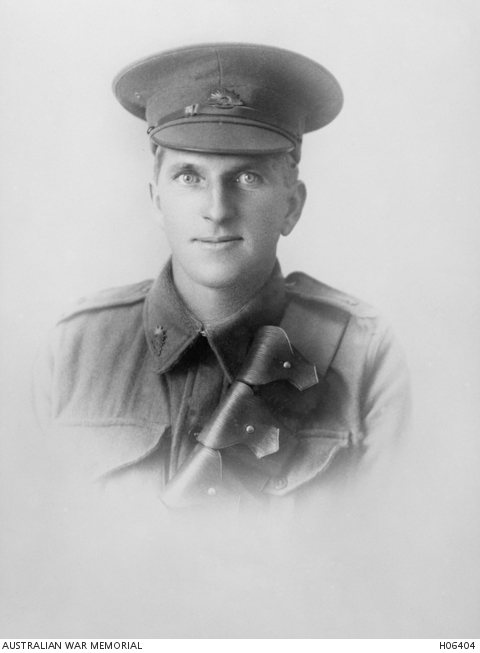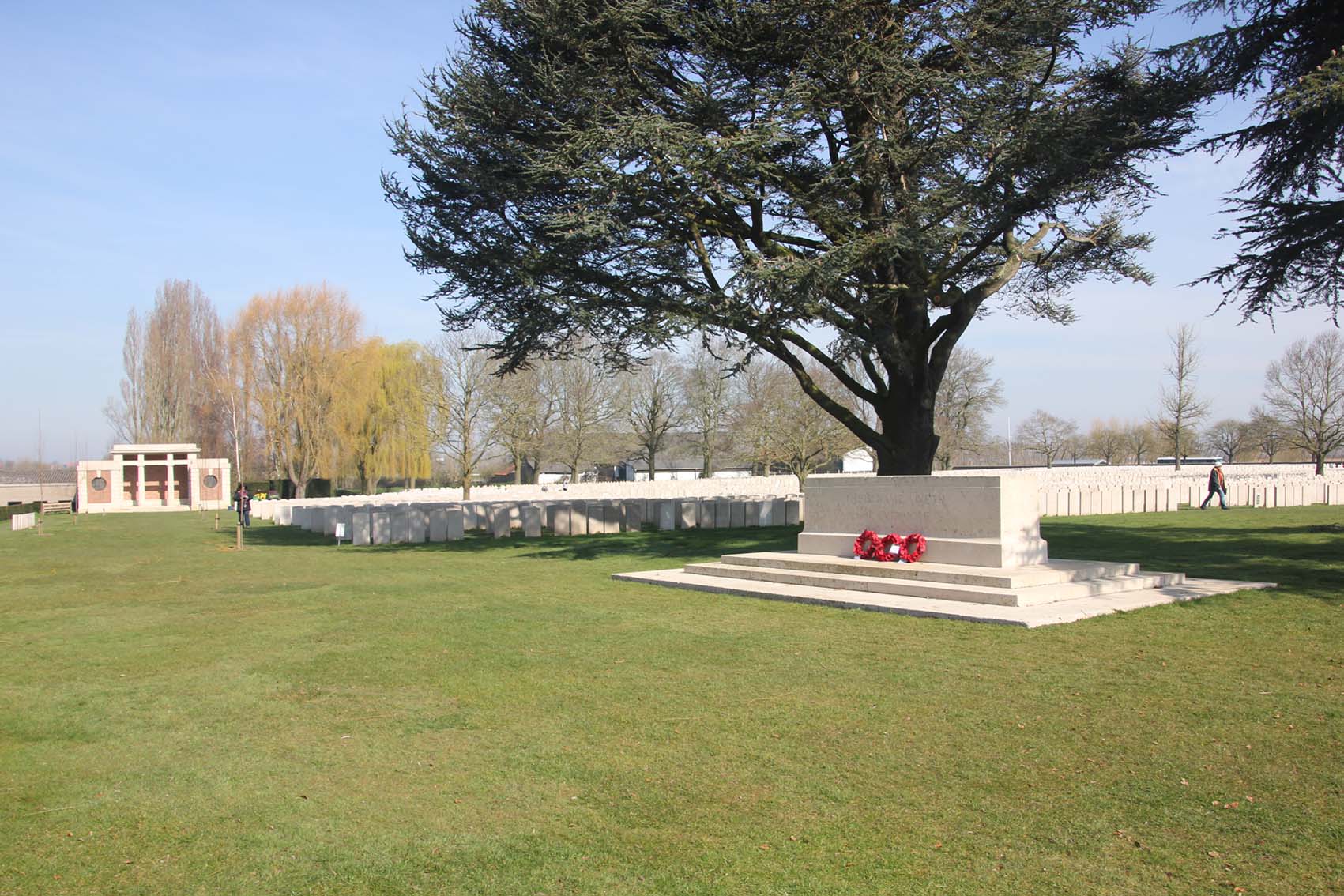Guy Walter Ralston was a farmer at Wellcamp, a few kilometres west of Toowoomba, when he enlisted, at Toowoomba, on 7 January 1916. He was a single man of 27 years and 7 months at that time, and no doubt felt it his duty to enlist as his older married brother (Robert Grieve Ralston, 9th Battalion) had returned from Gallipoli with shrapnel wounds. At about the time Robert was discharged, Guy took steps to enlist himself. The story of the Ralston brothers provides another glimpse into the sense of duty and courage that was so much in evidence in those days. Both brothers had been born in New Zealand, Guy at Bulls, and Robert at Napier; Guy was aged nine when he came to Australia.
Guy was educated at the Toowoomba Grammar School. He was 5’10” tall and weighed 154 pounds; he had a fair complexion, blue eyes and light brown hair and was of the Church of England religion. He listed his NOK as his father John Bryce Ralston (mother Elizabeth) of Wellcamp.
After initial training at Enoggera, Guy was attached to the artillery and after disembarkation in England, trained at the Artillery School at Winchester. He was transferred between a number of units including the 21st Howitzer Battery and the 15th Field Artillery Brigade, before settling with the 13th Field Artillery Brigade. He left Winchester in the last quarter of 1916 before “proceeding overseas – France” on 26 March 1917. He was taken on strength a few days later by the 113th Battery of the 13th F.A. Brigade (or AFAB).
Guy Ralston’s time at the front lasted seven months, and most of that was actually spent in Belgium. Service on the Western Front was generally referred to as “in France” regardless of which side of the border a unit was operating. When Guy arrived with his battery, plans were under way for the British attacks on the Hindenburg Line at Bullecourt, but when that battle ended, in May 1917, the focus was further north in Belgium. Beginning at Messines on 7 June and at Ypres at the end of July the British Army began one of the biggest battles of the War. The Australians were heavily involved throughout and casualties were tragically high: 38,000 Australians would become casualties before mid-October.
The Battle of Passchendaele, as it has come to be best known, is also significant for the fact that the artillery brigades were often so close and exposed to the fighting that they suffered direct attack from the Germans, particularly in the early phases. An artilleryman’s life was generally a bit safer than an infantryman’s, but not at Passchendaele. Guy Ralston spent a week in hospital from 7 September, apparently due to an accident in handling the guns.
On 1 October while supporting Canadian troops Guy’s battery came under fire. He was wounded in action and taken to the 2nd Canadian Casualty Clearing Station nearby. His sheet states that he suffered “shrapnel wounds chest, penetrating, face and elbow”. Guy died at the CCS three days later. He was buried in the Lijssenthoek Military Cemetery, about four kilometres south-west of Poperinghe (grave XX.F.5). There are over 1000 Australian graves in this cemetery, the second biggest CWGC cemetery of the Great War.
Post-war the family’s correspondence with the army was handled by a sister Emily (as E.A. Ralston) and brother Robert, the survivor of Gallipoli. Guy’s parents moved to Wellington Point on Brisbane’s bayside after the War. The usual commemorative items such as King’s Scroll and Plaque were signed for by his father.
Toowoomba Grammar School Archive Records state that he started at the school on 1st April 1900 and left on 1st December 1902. The School Magazine of November 1917 states, ‘RALSTON, GUY W. – son of Mr and Mrs J Ralston, of Wellcamp – At School 1900-1903 – Gunner in Howitzer battery. Died of wounds received in France, October 4th 1917. Age 28.
External Links:
Australian National Archives Military Records
AWM4 AIF unit war diaries 13/40/20 13TH BDE AFA OCT 1917
Australian War Memorial Honour Roll
Australian Red Cross Society Wounded and Missing
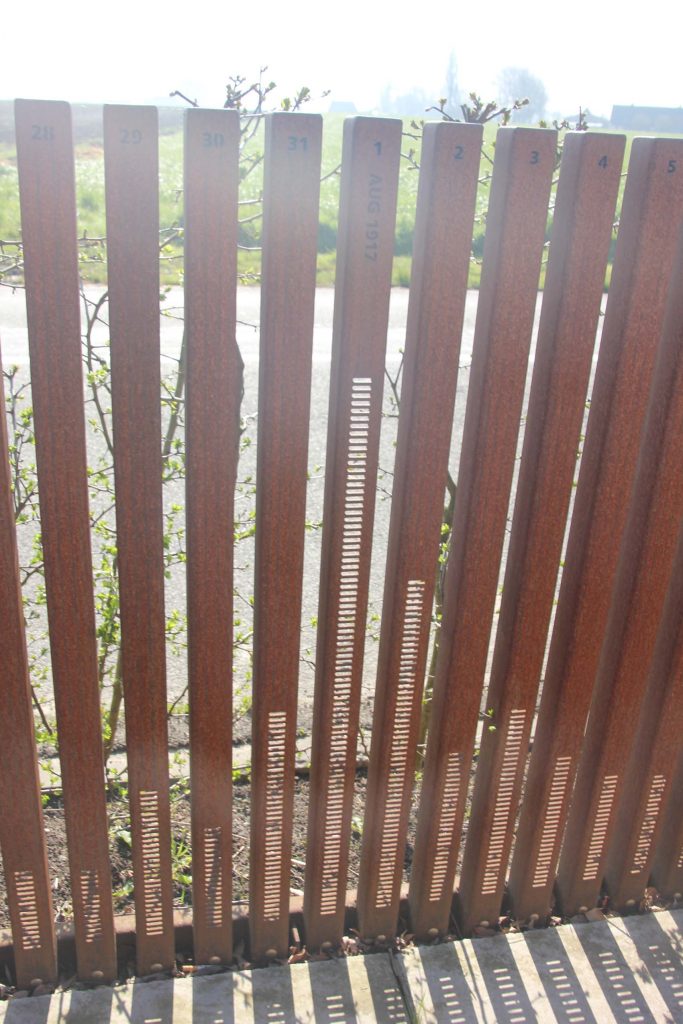
Railing outside the cemetery marking the number of burial on that date
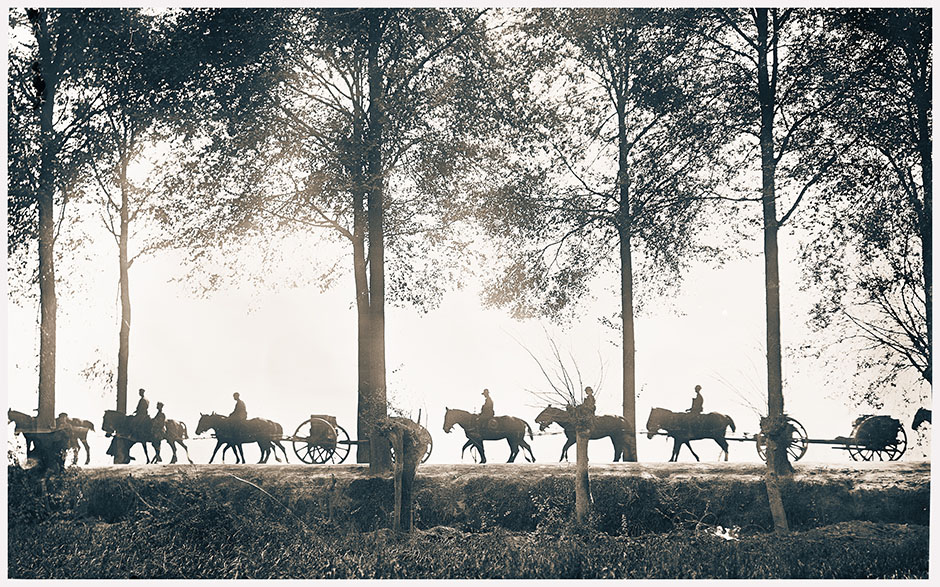
Australian Artillery loaded with Ammunition, Menin Road, 25 September 1917 – AWM E00829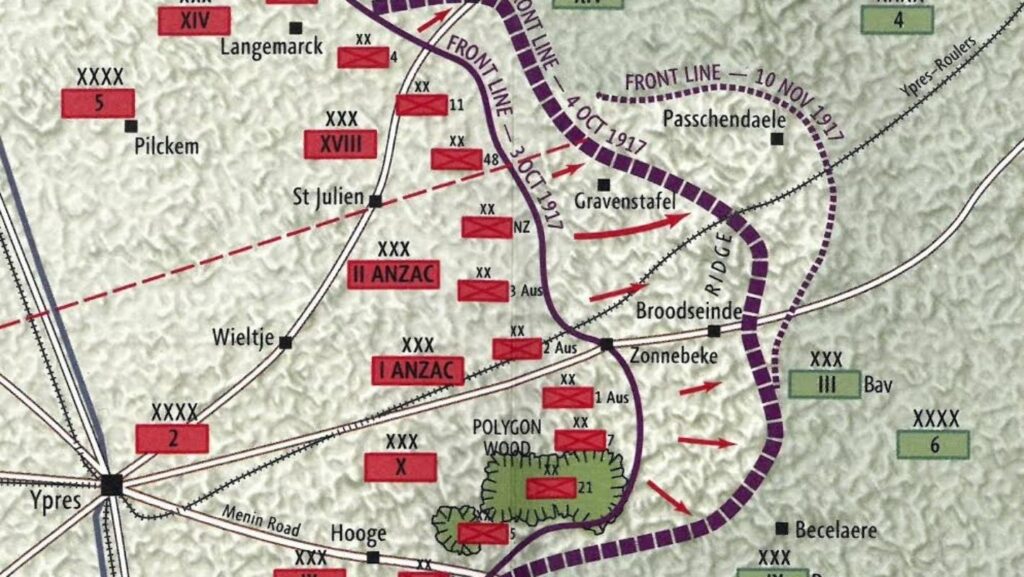
Passchendaele October 1917 offensive
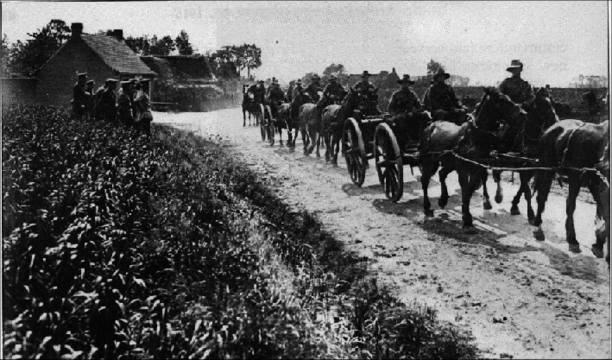
Australian 18 pounder guns


